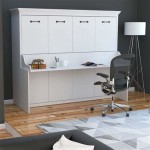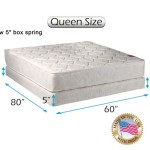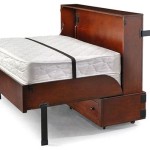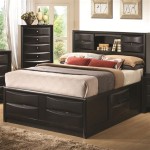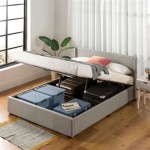Floating Bed Frame Queen Plans: A Comprehensive Guide
A floating bed frame lends a modern, minimalist aesthetic to any bedroom. The illusion of the bed platform hovering above the floor creates a sense of spaciousness and visual lightness. Building a floating bed frame can be a rewarding DIY project, particularly for those seeking a custom design or a cost-effective alternative to commercially available options. This guide explores key considerations and steps involved in planning and executing a floating bed frame project for a queen-size mattress.
Understanding the core principles of a floating bed frame is crucial for a successful build. The "floating" effect is achieved by concealing the supporting structure, typically within a recessed platform. This platform, while appearing detached, is firmly anchored to the wall and/or floor for stability and safety. Careful planning and precise construction are essential to ensure the frame's structural integrity can support the combined weight of the mattress, bedding, and occupants.
Before embarking on the project, gather the necessary tools and materials. Standard woodworking tools such as a circular saw, drill, measuring tape, level, and safety glasses are essential. Material selection depends on the desired aesthetic and budget. Common choices include solid wood like pine or maple for a more traditional look, or plywood for a cost-effective yet durable option. Metal supports, brackets, and screws are crucial for the frame's construction and stability.
Accurate measurements are paramount. A queen-size mattress typically measures 60 inches wide by 80 inches long. The platform should extend slightly beyond the mattress dimensions on all sides for a visually appealing overhang. Consider the desired height of the platform; a common range is between 8 and 12 inches. Factor in the thickness of the mattress and bedding when determining the final height for comfortable access.
Developing detailed plans is highly recommended. Sketches or 3D models can help visualize the final product and identify potential challenges before construction begins. Plans should include precise dimensions for all components, including the platform, supports, and any decorative elements. Clearly labeled diagrams and a comprehensive materials list will streamline the building process.
Construction begins with building the platform frame. Cut the chosen wood material to the planned dimensions. Assemble the frame using wood glue and screws, ensuring square corners and a level surface. Reinforce the frame with cross supports, particularly for queen-size beds, to prevent sagging and ensure long-term durability. The platform's underside can be finished with a veneer or left exposed depending on the desired aesthetic.
The next critical step is securely attaching the platform to the wall and/or floor. Wall-mounted supports are typically concealed within the platform frame and anchored to wall studs using heavy-duty lag screws. For added stability, particularly for heavier mattresses, consider incorporating floor supports as well. These can be strategically placed beneath the platform and secured to the floor joists. Ensure the supports are appropriately sized and spaced to distribute the weight evenly.
Once the platform is securely mounted, the mattress can be placed directly on top. No box spring is required for a floating bed frame. The recessed platform creates the illusion of a floating bed while providing a stable and supportive base for the mattress. Consider adding LED lighting strips underneath the platform for enhanced visual appeal and a subtle ambient glow.
Finishing touches can elevate the aesthetic of the floating bed frame. Sanding and painting or staining the exposed wood surfaces can create a polished and cohesive look. Consider adding a headboard or side rails for additional support and visual interest. These can be attached directly to the platform or the wall, depending on the design and desired functionality.
Regular maintenance is minimal but essential for the longevity of the floating bed frame. Periodically check the tightness of all screws and bolts, particularly those securing the platform to the wall and/or floor. Address any signs of wear and tear promptly to prevent structural issues. Dust and clean the platform regularly to maintain its appearance and prevent the accumulation of debris.
Building a floating bed frame offers a unique opportunity to personalize a bedroom and showcase craftsmanship. By following careful planning, precise measurements, and sound construction techniques, a DIY floating bed frame can provide a stylish and functional centerpiece for years to come.

Floating Queen Size Platform Bed Plans Howtospecialist How To Build Step By Diy Frame

Queen Size Floating Bed Plans

How To Build A Diy Floating Bed For Queen Size Mattress Thediyplan

Diy Queen Size Floating Bed Howtospecialist How To Build Step By Plans Frame

Floating Queen Size Platform Bed Plans Howtospecialist How To Build Step By Diy

Floating Bed Frame Plans Myoutdoorplans

Queen Size Diy Floating Bed Frame

Diy Floating Bed Frames How To Design Plan And Build Them From Scratch

Platform Bed Frame Plans Howtospecialist How To Build Step By Diy

King Size Floating Bed Frame Easily Build Your Own
